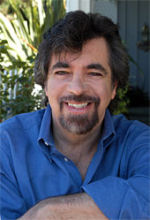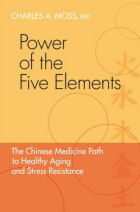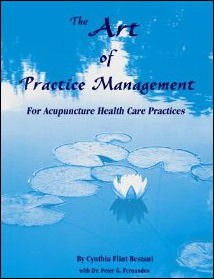Acupuncture & TCM Articles

Neil R. Gumenick is the founder and Director of The Institute of Classical Five-Element Acupuncture. Neil is a Worsley certified advanced teacher of Classical Five-Element Acupuncture and a practitioner with over 27 years of private practice experience. Neil holds three degrees from the College of Traditional Acupuncture (U.K.), and he participated for 10 years in the Master Apprentice Programô, led by Profs. J.R. & J.B. Worsley. Neil has taught at the USC and UCLA Schools of Medicine, the Worsley Institute of Classical Acupuncture, the Traditional Acupuncture Foundation, California Acupuncture College, Santa Barbara College of Oriental Medicine, and Pacific College of Oriental Medicine. He has been a Professor at Emperor's College of Traditional Oriental Medicine and SAMRA University of Oriental Medicine. Neil is co-author of The Art of Practice Management for Acupuncture Health Care Practices
The Initial Consultation: Getting to the Heart of the Matter, Part 6
By Neil Gumenick, MAc (UK), LAc, Dipl. Ac
In previous articles in this series, I discussed the importance of questioning beneath the superficial levels in order to reach the actual patient who is before us. There is no question or area of inquiry that is irrelevant or insignificant, as anything may potentially give us more than information or data, but also answer the vital questions, "Who is this unique and individual patient? How is this patient? What does this patient need to become whole on all levels?"
While our initial questions may be answered with "information," we can use our natural curiosity to ask follow-up questions that will penetrate beneath the surface. We can then plan our treatments to provide for the patient's needs - physically, mentally and spiritually. Classical Chinese medicine has, within its vast breadth, the tools to reach any level of suffering. It is up to us to perceive which tools (points) are being called for us to use.
 
The Significance of Symptoms
Any symptom can be the result of imbalance of any of the five elements or Twelve Officials (organs/functions). Once there is imbalance in one, there will be imbalance in all, as it is spread throughout the system. All are connected like members of a family. When one family member is sick, cranky, unable or unwilling to do their tasks, the rest of the family suffers and, in time, become sick and symptomatic as well. I discussed the interdependence of the Officials and elements at length in a previous Acupuncture Today article: "Symptoms: Distress Signals, and Nothing More".
Due to the interrelatedness of symptoms and elemental imbalances, it is insufficient to know only that a patient has migraines, arthritis or insomnia. Those labels can be the result of imbalances in any organ or function, and from any level. We need to know the cause and how to address it. In Classical Five-Element acupuncture, the elemental cause (or causative factor) is determined only through perceiving the patient's odor, color, sound, and emotion. The level of the disease is determined by empathetically perceiving and feeling within oneself what the patient feels.
The Question of Children
Regardless of a patient's marital status, assuming they are at least of child-bearing age, the question of children may provide the most revealing answers in the whole of the examination. For many people, children are a considered life's greatest blessing, sources of great excitement and pride, and their reason for being. For others, children can be annoyances, distractions from life goals or causes of jealousy within the couple. If a patient has no children, do they want them someday? What would having children mean? How would life be different or worse? Was everything in the couple relationship fine until the children came along? Did the partners grow closer or further apart after the kids? Are they staying together because of them? Does the mom or dad live vicariously through the children? Ignore them? Control them? If the children are grown, do they see them? Talk to them? If there are grandchildren, what is the relationship?
Rarely are one's feelings in relationship to one's children (or the subject of children) neutral. Therefore, we can use this area of questioning to learn much about our patient. Are the expressed emotions appropriate? If not, what emotion stands out as excessive or deficient? This is what is diagnostically useful. The fact of having two children, for example, tells me nothing. But, if the patient beams as they say, "I have two," it presents a very different picture than one who flatly answers, "Two," as if reading items from a shopping list. Both answers strike my curiosity to ask further: "Tell me about them." The first parent might answer enthusiastically, "Well, I have a boy and a girl. They're two and three. My little girl is having a birthday next week and we're having a dance party." It feels like the party has already started.
By contrast, the second parent might answer, "Well, what's to tell? I got two kids," and it feels strangely unhappy to me. This is jarring, prompting me to ask, "Do you enjoy your children?" Depending on the answer, I might follow with, "Tell me why not," "What do you enjoy most about them," or "What has having children prevented you from doing?"
As I question deeper, I encourage the patient to talk and freely express what is inside. In such a potentially charged area, we have an enormous opportunity to see the five emotions (joy, sympathy, grief, fear and anger) in their multiplicity of expressions. While one patient may express joy and happiness, another may express sadness. Perhaps ever since the children, the wife has ignored her husband, and he feels heartbroken, betrayed and alone. Another parent may feel resentful and angry, or frustrated at the constant crying, changing and sleepless nights. Others may feel secure that they are finally needed. Others may feel that the child gives them validity and meaning, filling an empty void. Others may be quite terrified of their own inadequacy as parents, the lack of money and resources, the enormity of the responsibility of another human life in their care. These are but a few of the endless varieties of emotional responses to this simple, but profound line of questioning.
A Case Study
In the course of an initial examination, I asked a male patient, married, age 35, if he had children. He replied that his wife had a son, age 12. I asked simply, "Tell me about him." He began a tale of a boy who had a natural aptitude for basketball, it seemed, but despite his father's prodding, had fallen short of his potential. The patient had enrolled his son in expensive basketball camps and hired private coaches. Although the boy had played on championship teams, he never played well enough. Even though the facts of the story described win after win, the sound of the voice could have been describing loss after tragic loss. The words and the way they were being conveyed did not match. Here was a story of excellence, accompanied by the sound of weeping and the emotion of grief. As I let the patient talk, I felt a sense of loss and grief well up within me. The sound of the words did not match the content. Of course, the patient was describing himself; his own perceptions, not really his son. I asked if he had played basketball himself. With this question, his eyes filled with tears and he replied that he had wanted to be a basketball star, but never made it. I asked how he channeled that ambition, and the grief continued as he described a life of an endless quest striving to prove himself worthy and falling short in his own eyes.
These two diagnostic "legs" of sound and emotion, combined with his rotten odor and white color lateral to his eyes, confirmed his causative factor as Metal. His feelings of unworthiness at the core and incessant need to fill a perceived void indicated his imbalance was predominantly at the spirit level. The following were among the points on the Lung meridian that I used during his course of treatment. Please note that these points are not formulae for feelings of unworthiness but chosen in the context of this unique patient's imbalance.
Lung 8 (Meridian Gutter): A gutter is a channel at the edge of a road or pathway that carries water off to a drain. If the gutters are jammed with trash, pollution builds and festers. This point opens and clears out the gutters for all meridians, so that the old filth and stagnation can be cleared away, allowing the Lung Official to do its job of receiving the pure qi from the heavens. Every inhalation we take is an "inspiration." We can only perceive the purity of heavenly inspiration when the gutters are clear. This patient had been carrying his version of old polluted trash: toxic thoughts, self-doubt, unworthiness and projecting the same onto his son. Until his own pure qi was able to flow freely, he could not see the beauty and perfection of himself (or his son) and was bent on chasing after (yet never finding) material proof of his own value.
Lung 3 (Heavenly Palace): This point belongs to a special group of points called Windows of the Sky. These points are akin to punching a hole in a prison wall, allowing the dazzling, bright light of day to enter, darkness to vanish, and the patient to see with the open eyes of spirit. These are immensely powerful points and not used early in treatment, but only when the patient is ready. By ready, we mean that the patient has improved sufficiently with treatment that they are willing and wanting to see, ready to see, but a part of them is still imprisoned. In this patient's case, he told me on his sixth treatment, that he was tired of living life as he had been, pushing himself to accomplish and accumulate more and pushing his son to do the same. He saw the futility of it, but couldn't see how to stop. It was as if he was looking for the way out, but not able to find it. Obviously, had his "gutters" not been cleaned out (with the support of other points on his Causative Factor meridians: Lung and Large Intestine), it would have been impossible for him to have come even this far. This was the time to open this window.
The name "Heavenly Palace" implies an abode of the Divine. Everything in such a palace is godly, inspiring, essential, beautiful, pure, awe-inspiring, innate and everlasting. It reminds us of what is truly present within us all. Although the Chinese used metaphors of kings and royalty in point names, they were describing what is within every human being, waiting to be discovered when the time is right.
 
The Art of Practice Management for Acupuncture Health Care Practices
What you will find in this book is a specific, comprehensive approach that gets to the root cause of success in practice.
This new book presents acupuncture practice as art from the standpoint of centering, qi, and wholeness. It builds on the premise that practices succeed from bridging inner and outer aspects of the self. It is an inquiry into the self and addresses clear understandings and approaches to reputable patient care and practice qi. It brings in the five elements and work with the seasons of practice from training and start-up to growth, stability, expansion and transformation. The authors artfully bridges the essence of both patient and practitioner well-being without excluding the practicalities of financial well-being. This book very specifically and extensively shows how the different parts of practice nourish and feed one another and are interdependent on one another for the qi to flow synchronistically.
It explores the dual nature of procedures that work and those which do not in acupuncture health care practice, returning again and again to the delicate balance of practicality and spirituality.
|
